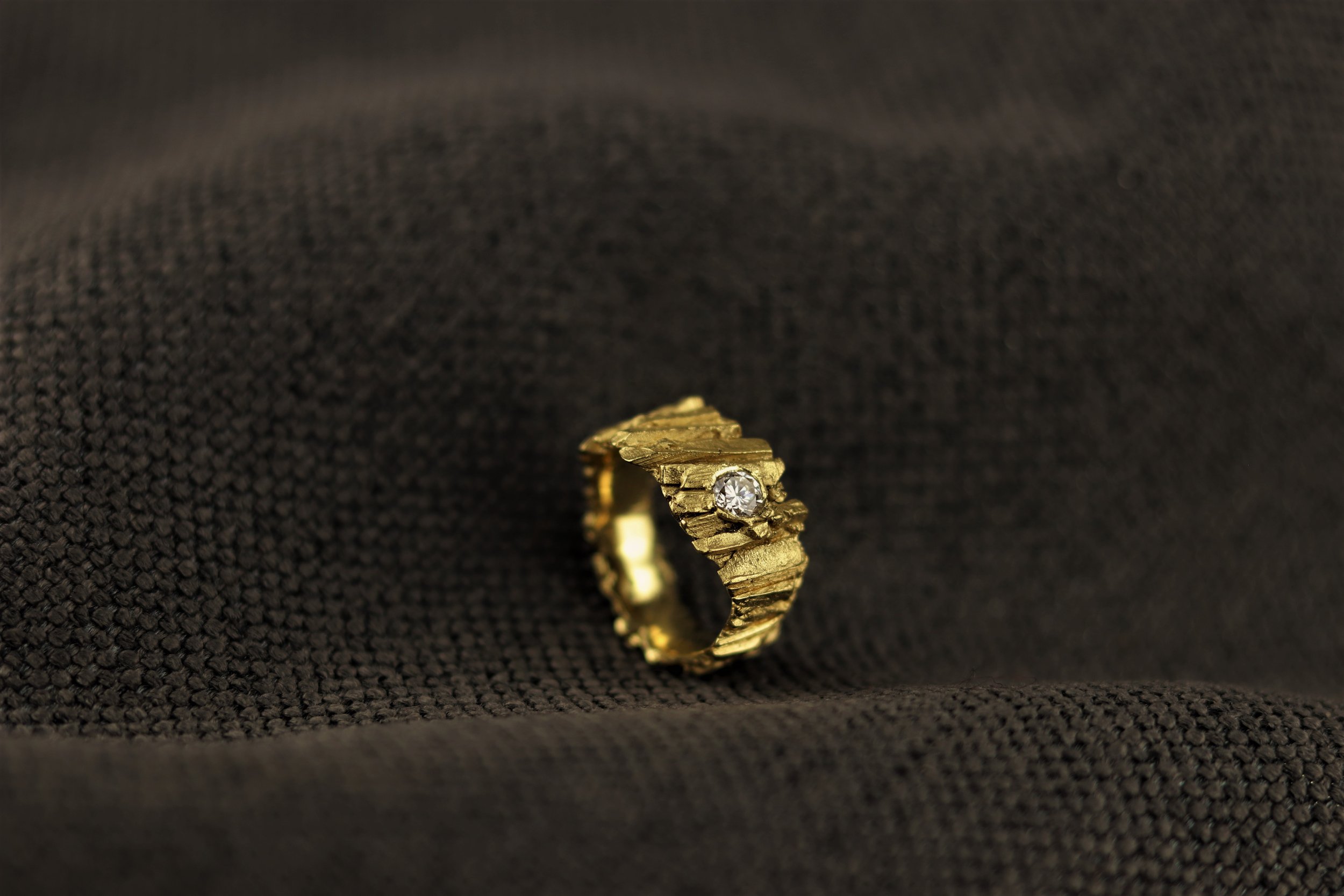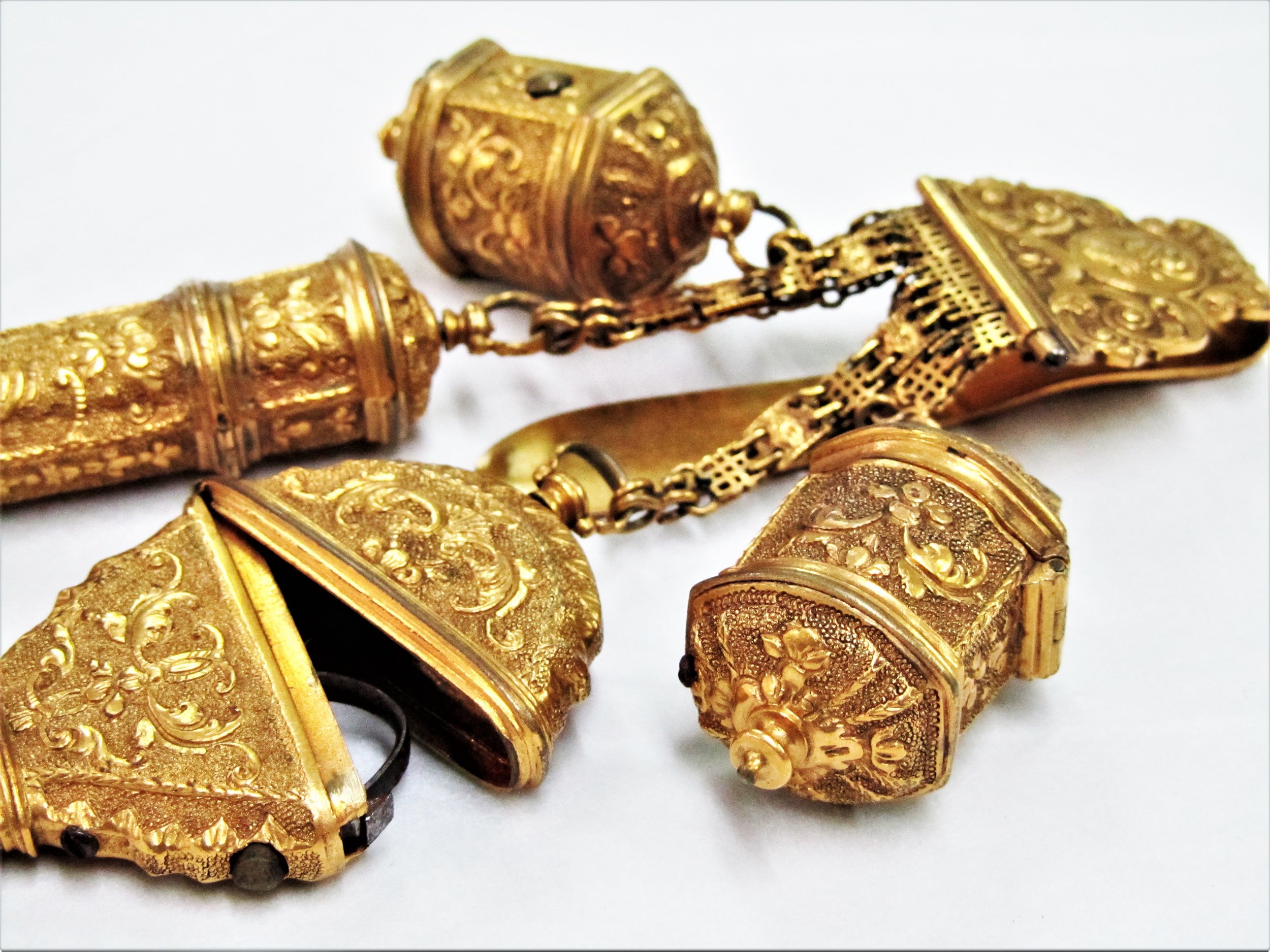Bespoke 18ct gold and 0.25ct diamond “Basalt” ring made using Helen’s own recycled materials from an old ring.
I really enjoyed transforming Helen’s 18ct gold ring into a customised version of one of my “Basalt” rings. The rocky textures are inspired by my experience of Vik Beach in Iceland and the huge columns of basalt rock formations. This hand carved texture provides a raw beauty to contrast the classic 0.25ct white round brilliant diamond to create a new ring that felt edgier and more exciting for her to wear everyday.
“It had a nice diamond and was 18 carat gold but I really felt I wanted to make more of a creative statement with that piece.” - Helen
Here is Helen’s experience in her own words;
“I am always keen to reuse and recycle. I only have a few good pieces of jewellery, but my tastes have changed over the 30+ years I’ve owned them and so I felt it might be time to give one a new lease on life.
I approached Jade to see if we could do anything with a diamond ring which had a very simple design and I wore often. It had a nice diamond and was 18 carat gold but I really felt I wanted to make more of a creative statement with that piece.
We discussed whether it was possible and I returned a few weeks later with the ring and we looked at some design ideas and came up with the piece I now have.”
“It was such a pleasure to work with Jade and also to know that I didn’t have to part with my old favourite or leave it sitting to gather dust in a drawer. That it would continue to be worn and loved.
The final piece is fantastic and I am really enjoying wearing it. I have had lots of comments on my “new” ring and I always take pleasure in telling people that it is actually the same ring, just remodelled.” - Helen
If you are interested in learning more about remodelling, or comissioning a special piece just get in touch: info@jademellor.com.
































































































































































